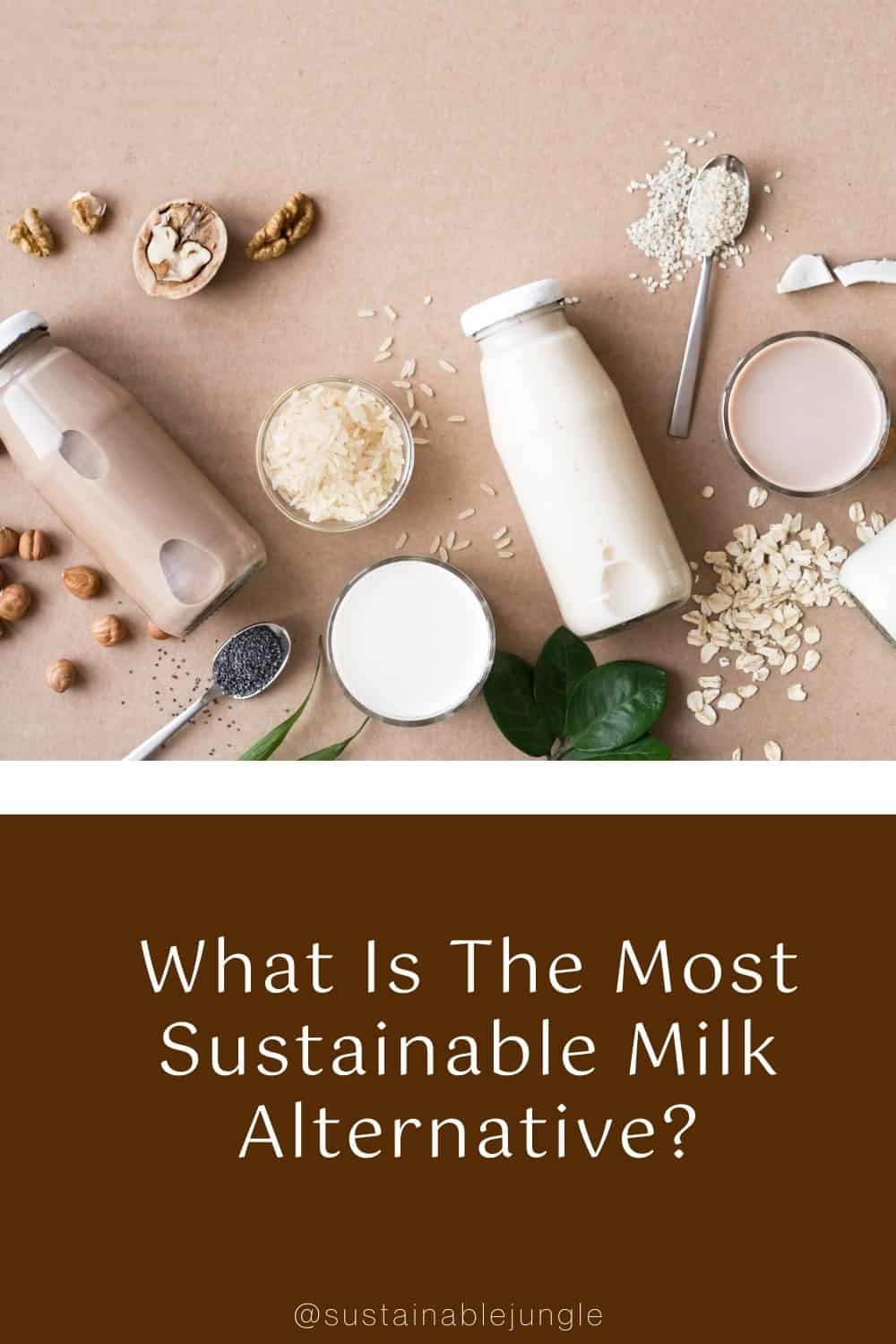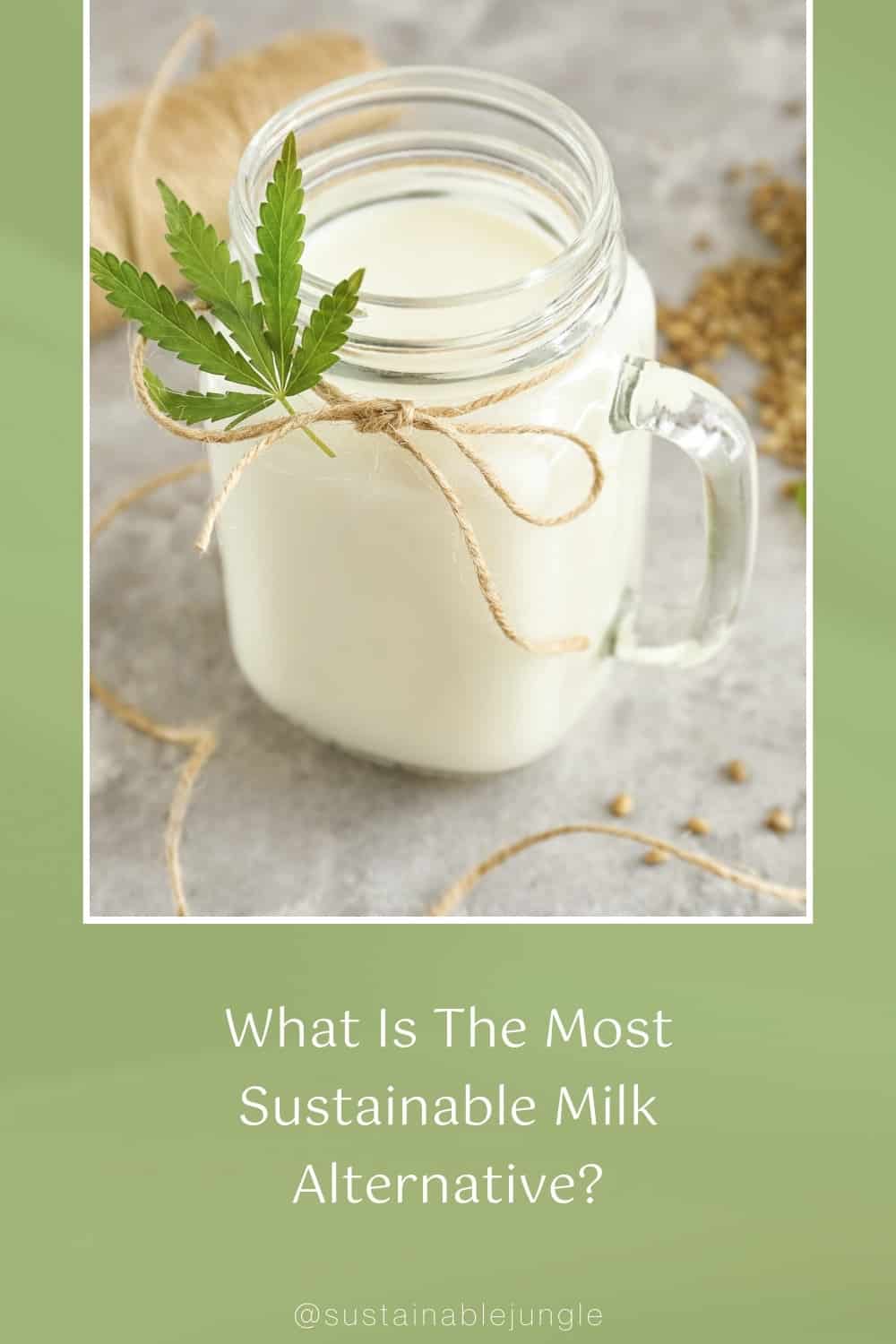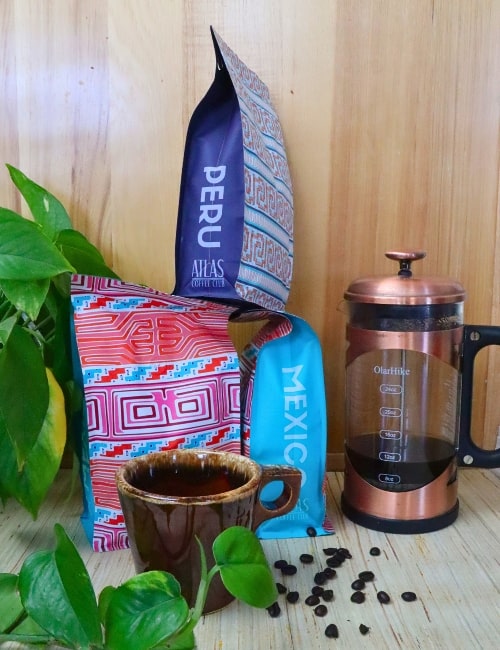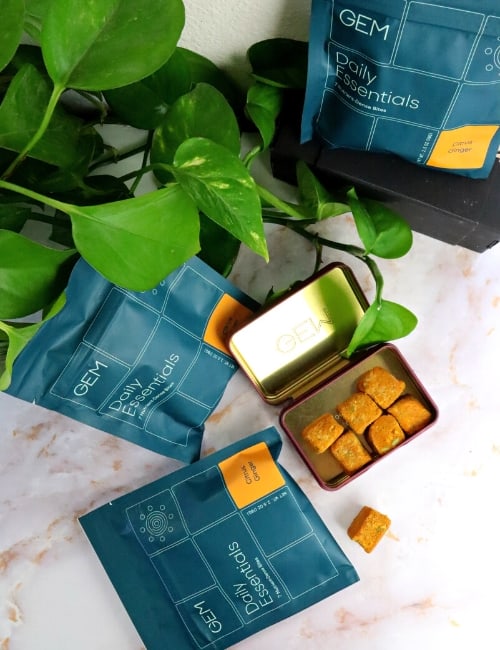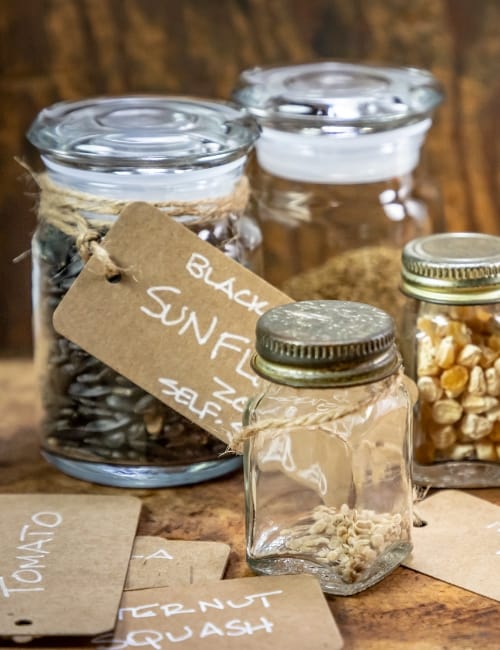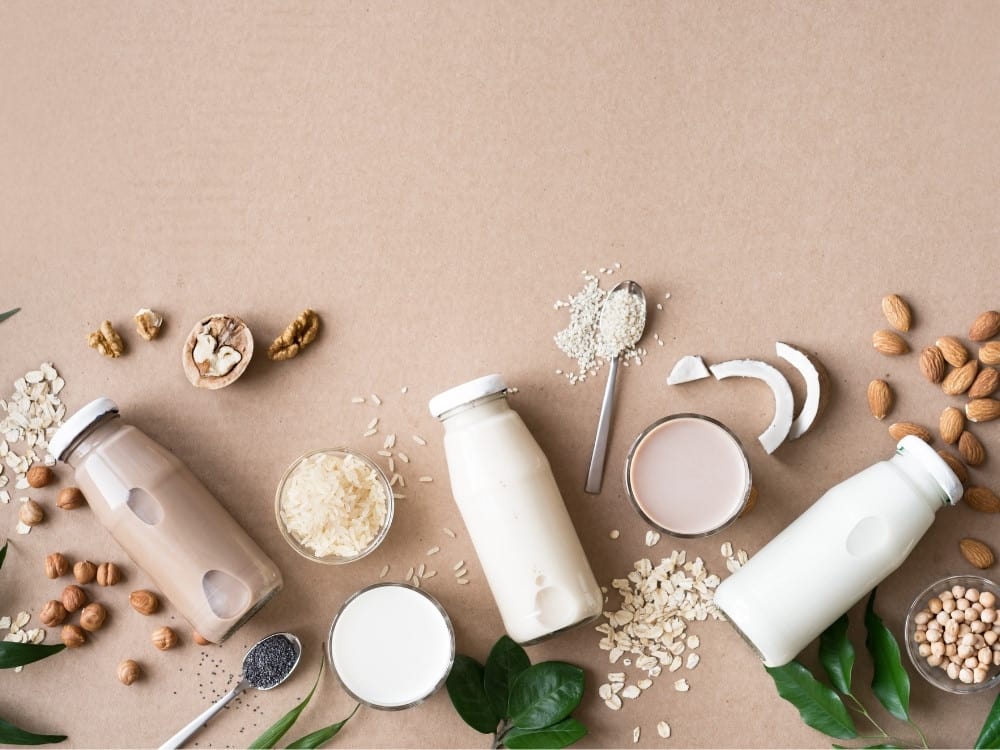
What Is The Most Sustainable Milk Alternative?
You’ve ditched dairy but you’re wondering which of those colorful cartons is the most sustainable milk alternative.
It’s a good question, especially when new types of plant-based milk keep popping up, each with their own unique taste and nutritional profile.
But what about the impact they have on people and the planet?
First things first: the average plant-based milk is much more sustainable than dairy milk.
A 2018 study by the University of Oxford, found that a glass of dairy milk emits three times more GHGs than a glass of plant-based milk and takes up to nine times as much land.
By mooving away from milk, you’ve already done the planet a big favor.
But the question remains: which plant based milk is the most sustainable?
Join us as we spill the beans on soya, thrash out oats, argue over almonds, contest coconuts, and more in our quest to find the most sustainable plant milk for your low impact latte.
The Full List Of Which Milk Is The Most Sustainable?
1. Almond Milk
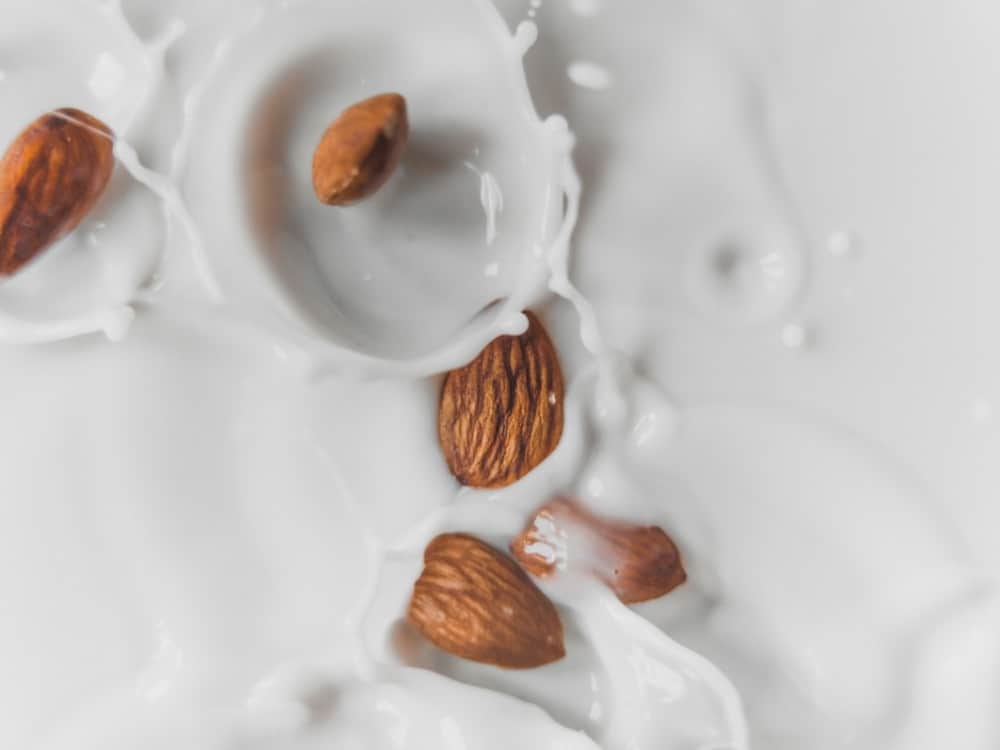
Being one of the most popular plant milks, you might hazard a guess that almond milk is the most sustainable non-dairy milk due to the fact that nut trees lock in carbon.
And yes, nuts like almonds are potentially one of the most sustainable foods—if they have been grown sustainably.
But therein lies the problem for the at-issue almond.
Over 80% of the world’s almonds are grown in California. It’s a huge industry with at least two major problems.
Water Consumption
Almonds are the thirstiest of all substances used in plant based milks. It takes 74.3 liters of water to produce just one 200 ml glass of almond milk.
This heavy water use is particularly problematic given California’s recent history of severe drought.
However, to put this in perspective, the same size glass of dairy milk requires 125.6 liters of water and California produces more dairy milk than almond milk.
Growing alfalfa to feed the livestock also requires more water than growing almonds.
Pesticides and Dying Bees
Another big issue is heavy pesticide use and its effect on bees, wildlife, and human health.
The commercial bee colonies that are sent to almond farms—the biggest managed pollination event in the world—are dying in record numbers due to pesticide exposure, disease, and habitat loss.
As well as impacting the commercial bee colonies, wild bee populations and other pollinators are also affected, putting the entire food system in jeopardy.
The industrial method of farming almonds (including the mechanization of pollination) is at fault here. Almonds grown organically in smaller-scale orchards are a far more sustainable option.
Almonds are also grown in Australia, Italy, and Spain, so check where a brand is sourcing from and be sure to buy almond milk that’s certified organic.
Or, better yet, buy some organic almonds in bulk and make your own almond milk.
2. Cashew Milk
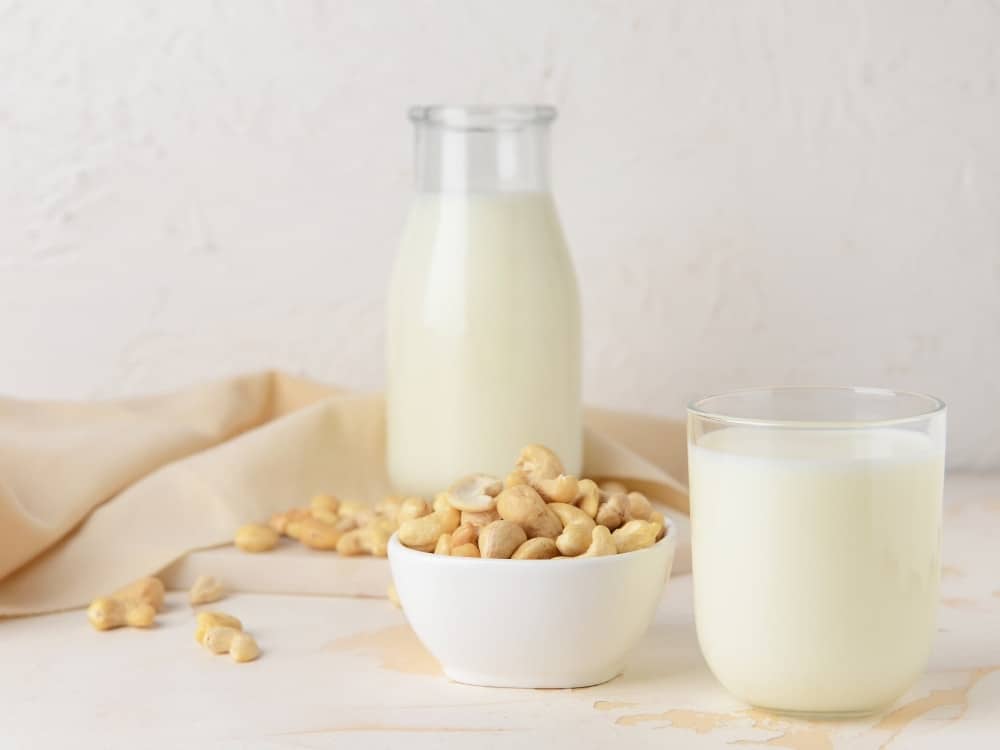
Like almonds, cashews are a thirsty crop but because they grow in the tropics in places like the Ivory Coast, Vietnam, Thailand, and India, rainwater meets most of this need.
The biggest issues with cashew crops are:
Deforestation: The Ivory Coast is the biggest cashew producer. Cashews are grown in extensive monocultures and contribute to deforestation, soil erosion, and soil nutrient depletion.
Pesticides: Heavy pesticide use affects wildlife and humans.
Labor conditions: Cashews are harvested by hand and are toxic to the touch during harvesting and processing stages. When working conditions are poor, laborers can suffer painful skin injuries.
To ensure safe and fair working conditions, make sure you only buy cashew milk and other cashew products that are Fair Trade certified.
3. Coconut Milk
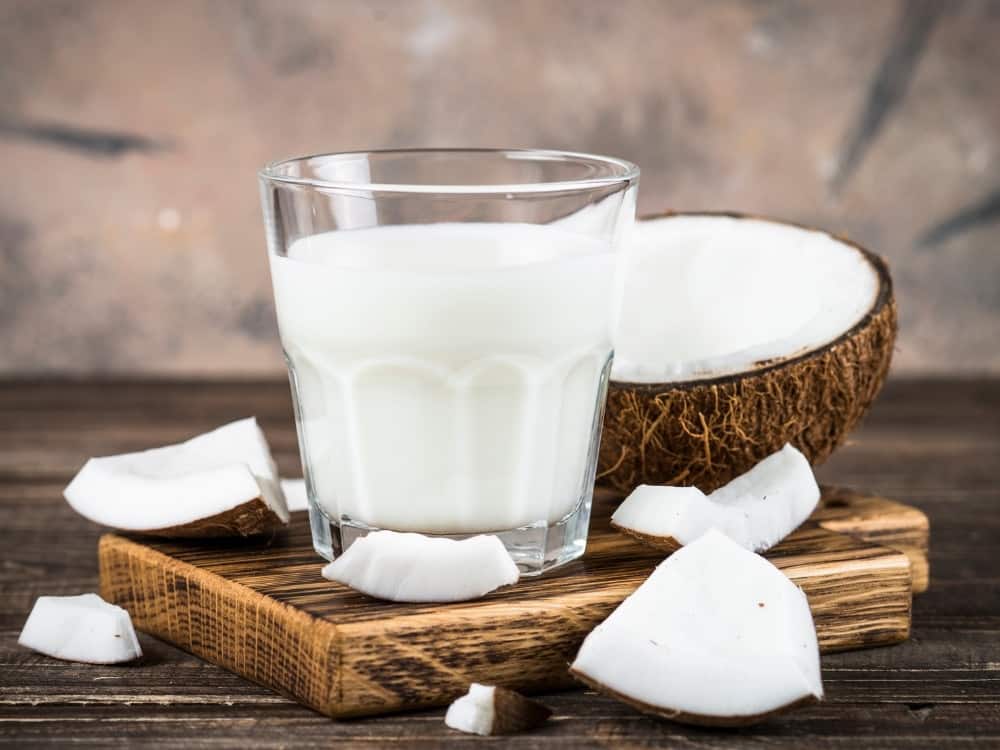
Coconut milk is an increasingly popular dairy alternative but is it the most sustainable vegan milk?
In a (coco)nutshell, no.
Coconuts are grown in the tropics in places like India, Indonesia, and the Philippines so it’s an ingredient that racks up those food miles—AKA carbon emissions.
Increasing global demand for coconut products poses a threat to the local environment as coconuts start being farmed on a larger scale.
Coconuts also have a history of worker exploitation. Labor conditions and pay are often poor so, as with cashews, it’s important to buy fair trade certified and sustainably sourced products.
4. Hazelnut Milk
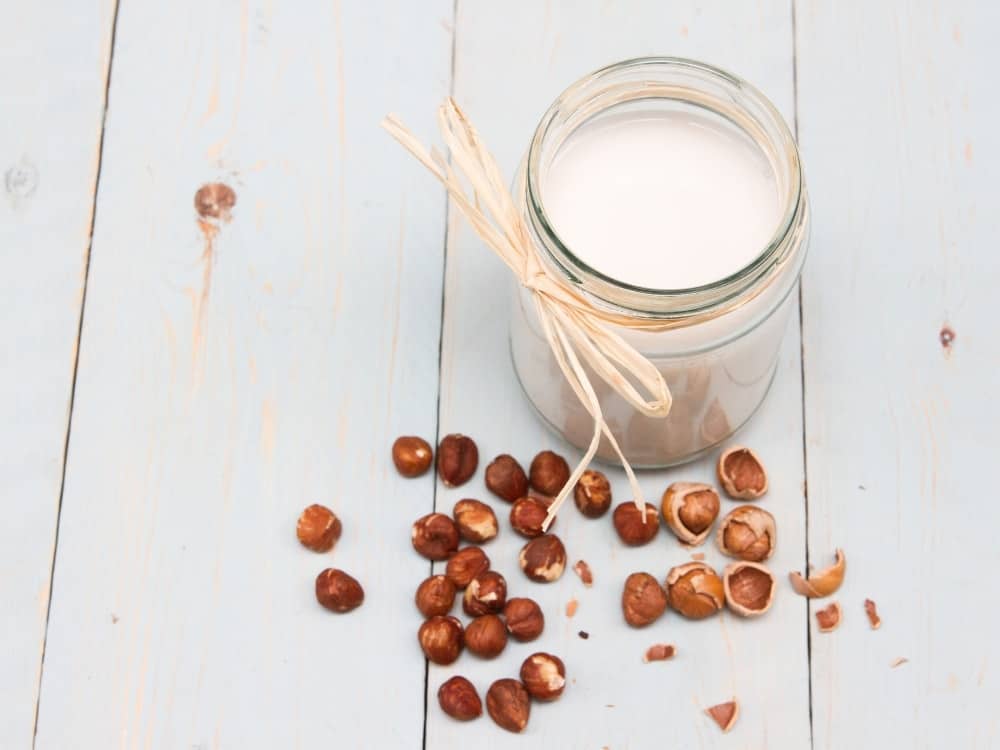
Given the issues with almonds, cashews, and coconuts, you’re almost certainly wondering, “What is the most sustainable nut milk?”
Well, hazelnuts—the 5th largest tree nut crop—might just crack it.
They grow in wetter climates like the Pacific Northwest, where higher rainfall meets their need for water. This means they’re not reliant on vast amounts of irrigation like almond crops.
They’re also wind-pollinated, eliminating the need to truck in commercial bee colonies to manage the pollination process (and the associated environmental fall-out).
Overall, hazelnuts are a low-input, low impact crop that can be grown as part of regenerative farming systems.
This is one sustainable nut milk we might legitimately be able to go nuts about.
5. Hemp Milk
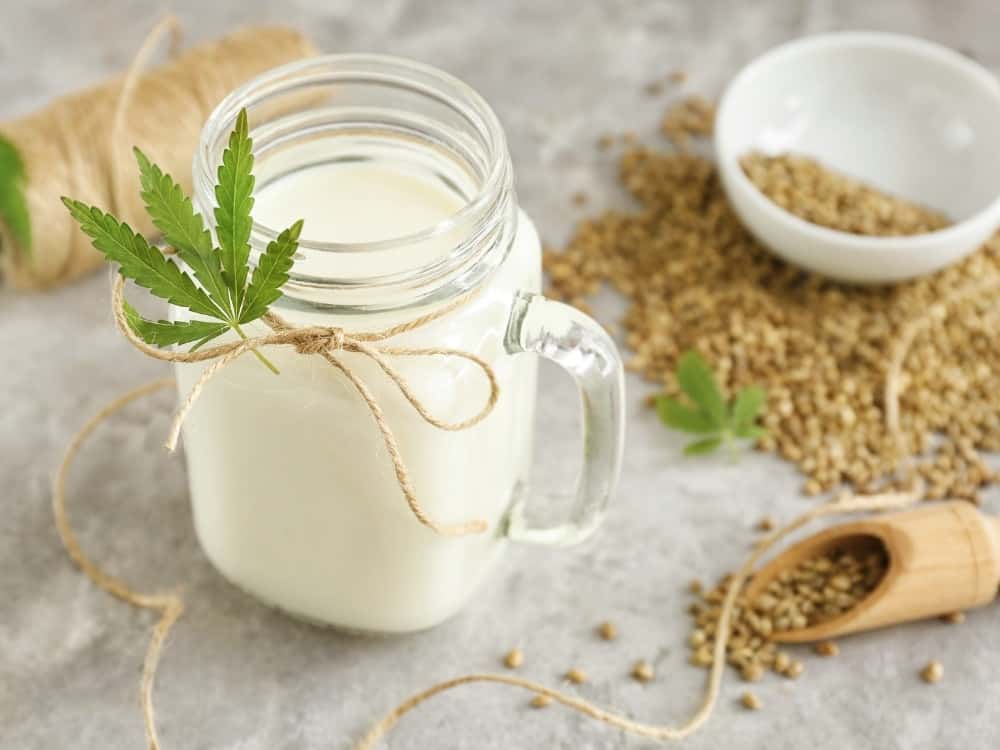
Moving on from nuts to seeds, we have hemp—possibly the most sustainable plant based milk out there.
Hemp is highly regarded as the sustainable crop of the future.
It’s grown as a niche crop in the Northern Hemisphere. It’s a fast-growing, high-yielding, and carbon-negative crop that can easily be grown without any chemical inputs.
All parts of the plant can be used for hemp clothing, food, biofuel, paper and more. From hemp underwear to hemp shoes, this sustainable crop can dress us head to toe and be splashed in our morning cup of joe.
You can see why we’re so hemphatic about this one.
6. Flax Milk
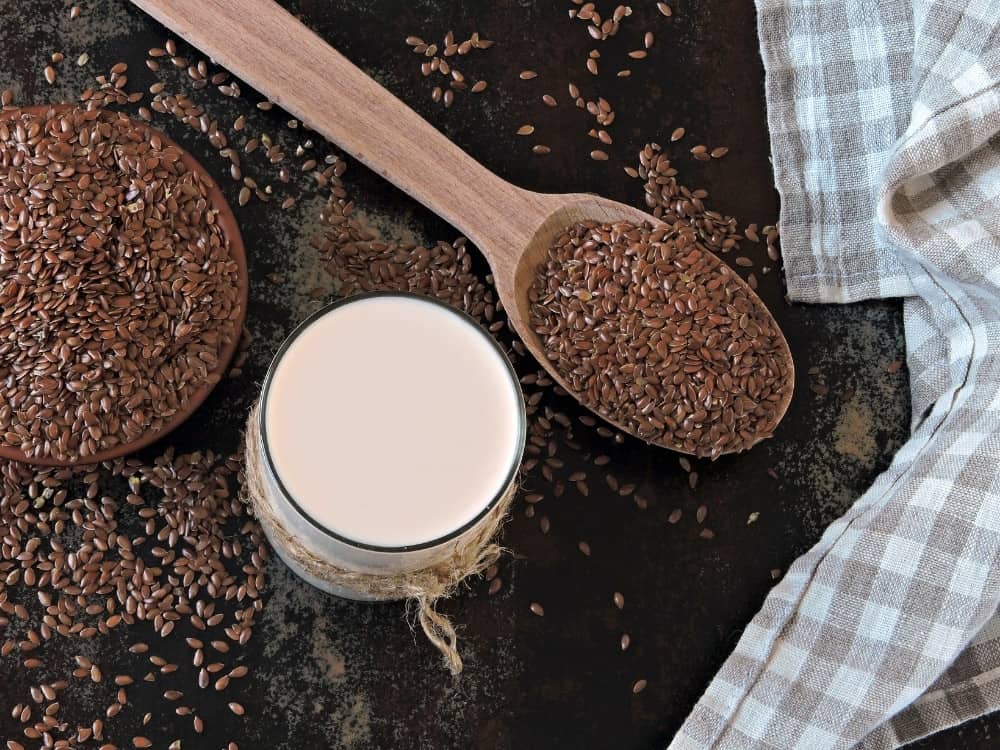
What is the most sustainable non-dairy milk?
Possibly the same stuff you’re sleeping on at night.
Flax milk is somewhat more on the niche (but hopefully up-and-coming) side of sustainable milk alternatives.
Another seed with similar eco credentials to hemp, flax is the basis for linen fabric with common practical applications in linen clothing and home textiles.
But beyond linen sheets and linen curtains, flax plants provide protein-rich seeds full of healthy fats, vitamins, and omega-3s, yielding milk that’s safe for nut allergies, keto diets, and vegans alike.
Not only that, it’s one of the most environmentally friendly milk options.
Like hemp, flax is a non-GMO hyper-efficient crop that doesn’t require much land, water, or inputs to grow. It’s also naturally pest resistant, meaning pesticides are not needed.
7. Oat Milk
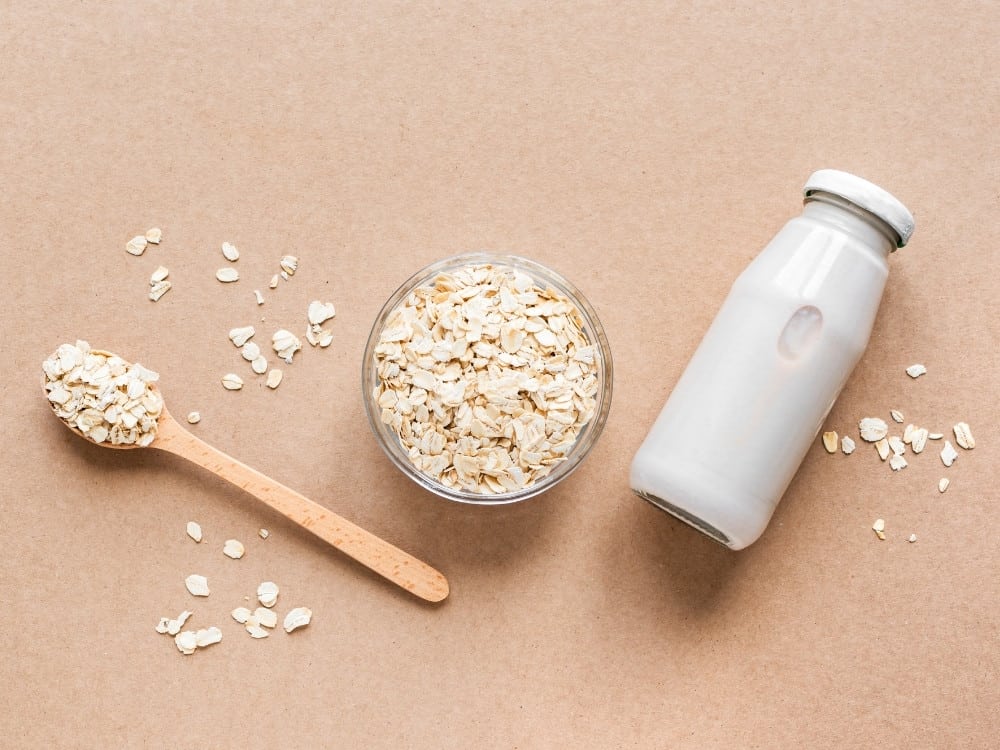
Oat milk might be one of the most popular dairy alternatives especially among those with nut allergies—not to mention zero waste coffee—lovers who love an extra creamy latte.
But is it the most sustainable non-dairy milk?
Oats are grown in cooler climates avoiding the deforestation issues associated with some crops grown in the Global South. However, most oats are grown in large monoculture operations and again, pesticides are a serious concern.
The Environmental Working Group has found glyphosate (a recognized carcinogen) in many oat-based products including children’s cereal, due to the pre-harvest spray of Roundup.
In the first round of tests, glyphosate was identified in all but two of 45 samples of products made with conventionally grown oats and at levels higher than those deemed safe for children’s health by EWG scientists.
Glyphosate was also found in roughly one-third of the 16 products made with organic oats, albeit at levels below the EWG’s benchmark.
How does glyphosate get into organic cereal?
It’s assumed that it must either drift across from fields of conventionally grown crops or come from cross-contamination in production facilities.
Either way, this is a testament to the heavy use of glyphosate in general and a reminder of the importance of supporting the organic farming movement.
8. Pea Milk
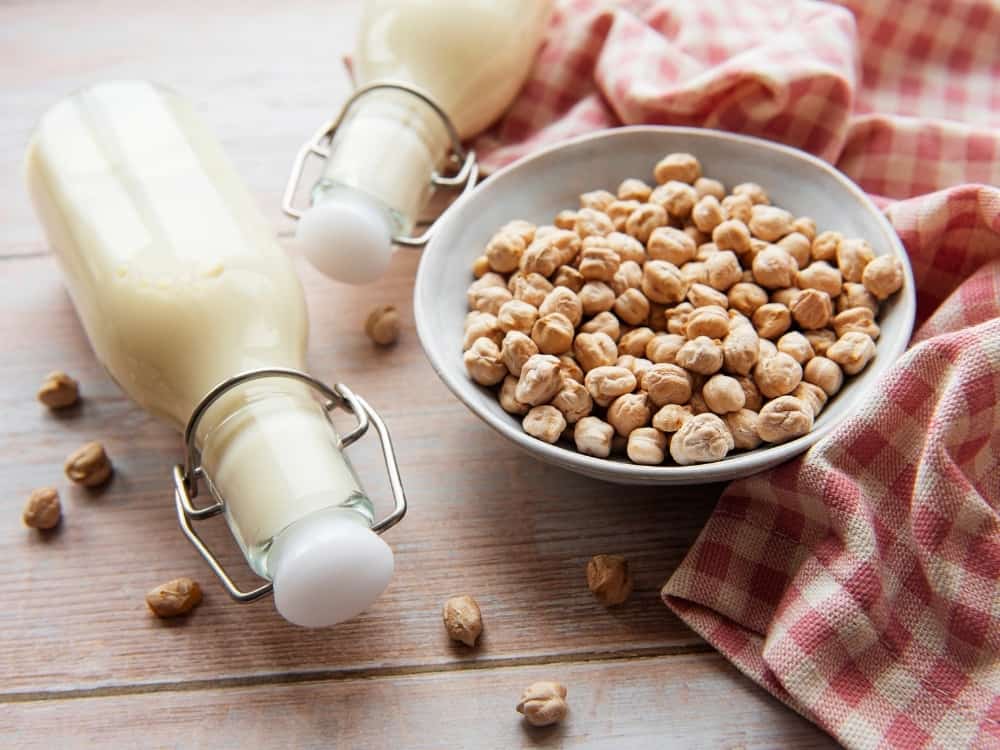
A relative newcomer to the market, pea protein is becoming steadily more popular as a vegan substitute for whey and other dairy-derived protein powders.
It can also be used to make one of the best plant based milk alternatives for the environment.
Yellow split peas are first milled into flour and then processed to separate the protein from the fiber and starch. To make milk, the purified pea protein is combined with water and other ingredients.
Part of the legume family, peas are a nitrogen-fixing crop.
They can be grown regeneratively as part of crop rotations, reducing the need for nitrogen fertilizer and the impact that this has on the planet through the release of nitrous oxide.
These eco credentials certainly place peas as a genuine contender for the most environmentally friendly milk.
9. Potato Milk
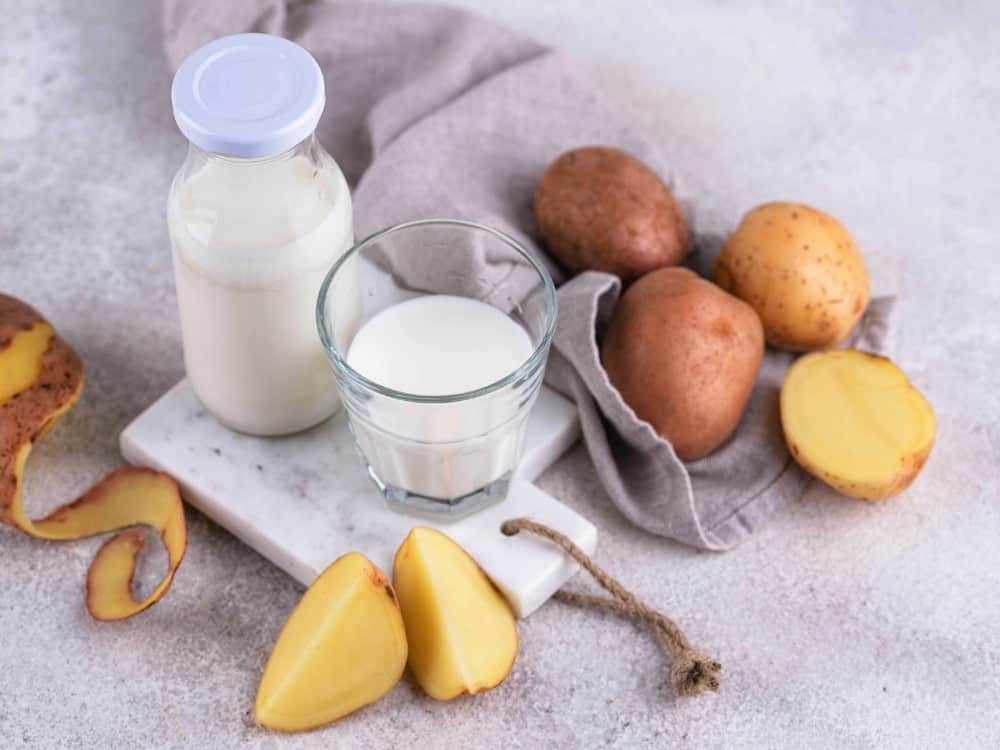
The newest plant milk on the block is made from the humble potato.
Potato milk?!
Yup. Swedish-brand DUG launched its potato-based eco friendly milk in 2021 and it may just be the best sustainable milk alternative out there.
According to DUG, potatoes need half the space of oats to grow, 98% less water than almonds, and have a low climate footprint of 0.27 kg CO2e/kg.
The Journal of Cleaner Production compared the carbon footprint of the three most popular starchy carbohydrate foods: pasta, potatoes, and rice.
It found that compared to pasta and rice, potatoes had the lowest levels of GHG emissions plus a much lower level of water consumption than rice.
Plus, potatoes are a hardy crop that don’t require specific growing conditions and can thus be cultivated in almost any climate.
If potato milk production were to be adopted on a wide scale, it would drastically reduce the mileage these starchy superstars need to travel before making into your morning muesli.
10. Rice Milk
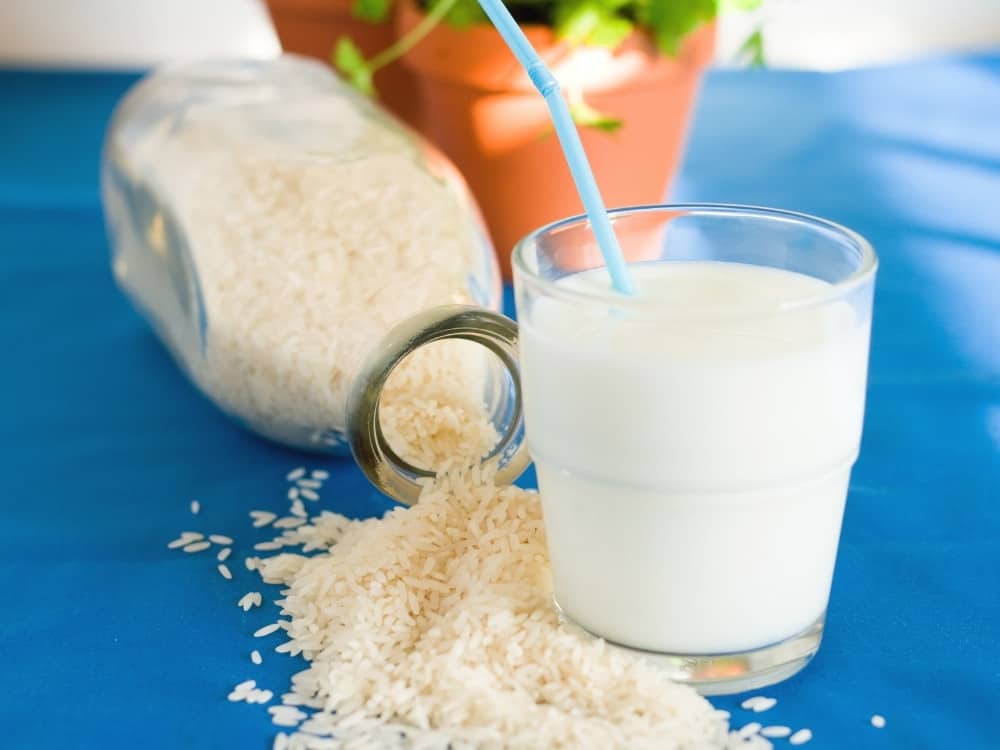
Whilst it’s been a popular choice for consumers, rice milk falls short of making the grade for the best eco friendly milk.
In fact, rice may actually have the highest GHG emissions due to the methane-producing bacteria in flooded rice paddies.
Water consumption is also a major issue. Rice is second only to almond milk as the most thirsty plant milk requiring 54 liters of water per 200ml glass of milk.
Despite this, it still has less of a climate impact than dairy.
It is possible to grow rice in a more sustainable way. To avoid pesticide issues, always opt for organic.
11. Soy Milk
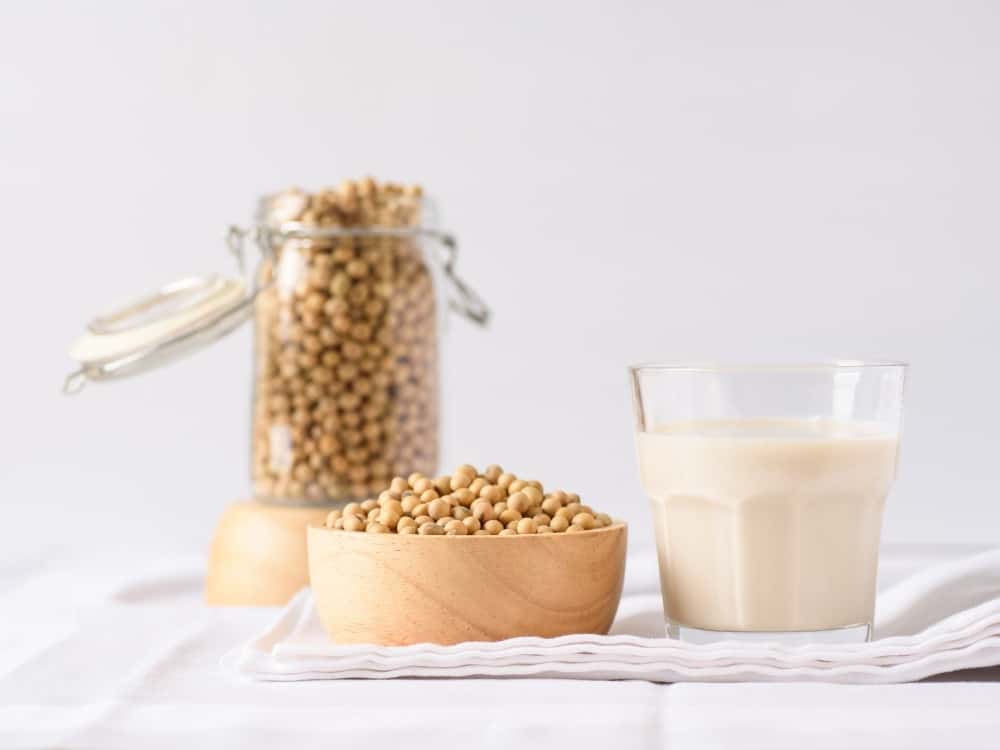
Last but perhaps not least, we have soy milk, or soya in Europe.
One of the first plant milks to reach global popularity, soya was the most sustainable vegan milk alternative (rather the only) at one time.
Health concerns regarding the hormones in soy and the linkage between a high soy diet and breast cancer risk meant it fell out of favor for a while but recent studies suggest that these are misplaced.
Health aside, soya ranks on a similar level to oat milk with lower CO2 emissions and water usage.
As another member of the legume family, soy plants are nitrogen-fixing and can be grown as part of a sustainable farming set-up, but unfortunately, that’s not the widespread reality.
Why soy is not the best plant based milk alternative for the environment
On the downside, soy has been associated with high rates of soil erosion and deforestation in South America—so much so that it accounts for 47% of the EU’s imported deforestation-linked agricultural and livestock commodities.
Although much in this area is actually grown for animal feed, Brazil and Argentina (along with the US) are still responsible for 80% of the world’s soy cultivation.
South American soy farming also has negative social impacts, like displacing small farming communities and worker exploitation ( it’s far from the most ethical milk).
However, because of soy’s widely applicable uses, the WWF and US Soy (a collaboration of American soybean farmers) are working to improve the methods used to cultivate soy.
Until wider soy supply chain improvements can be made, avoid soy grown in South America and always choose organic.
Did you know we Have a Newsletter?
We cover the latest in sustainable living, fashion, zero waste, beauty, travel, finance and more…
What Is The Most Sustainable Milk?
When looking at which milk is the most sustainable, there are several factors to consider.
We need to look at the whole supply chain, not just the raw ingredient stage but how the ingredients are processed as well as the packaging and transportation of the finished product.
Our quest for the most eco friendly and ethical milk needs to consider the following:
- Environmental impacts of cultivation: This includes water usage, chemical inputs, and whether deforestation, loss of biodiversity, and soil erosion are an issue and if so what is the scale of that impact.
- Social Impact: Who grows the crops and what are their working conditions and pay?
- Food Miles/Shipping: What countries are the crops grown in and how far do they have to travel?
- Processing: We need to consider how the raw ingredients are processed, what other ingredients are added, and how sustainable these are.
- Packaging: Tetra Pak cartons are most commonly used for plant based milk. These have less of a carbon impact than plastic bottles but recycling rates vary.
- Transport to stores: The main ingredient in any plant based milk is water. Typically there might be 3-10% of the plant, 90% water, and very small amounts of other ingredients such as oil, calcium, and vitamins in fortified versions.
- Health: When asking, “What is the most sustainable vegan milk?”, it’s easy to overlook nutritional sustainability in the face of planetary sustainability. However, it’s important to also look into the nutritional profile of your milk as well as any potential associated health risks.
How To Choose The Most Sustainable Milk
Here are our top tips for finding the best sustainable milk alternative.
1. Make your own
What type of milk has the smallest footprint?
That which you make in your own zero waste kitchen or add to that cup of zero waste tea. Buy the dried ingredients: oats, nuts, and seeds at your local or online bulk store and turn these into milk at home. It’s relatively straightforward and there are plenty of recipes online.
This saves on CO2 emissions caused by transporting cartons that are mainly water—taking huge steps toward being the most eco friendly milk, regardless of your plant of choice.
2. Consider the food miles
Buying domestically (or ideally locally) is our favorite sustainable shopping tip.
Oats and hemp can both grow in temperate climates. Soy can also be grown in Europe as well as in the US and Canada. Choose European-grown soya if you live in this part of the world to cut down the carbon footprint.
3. Choose organic certified products
4. Choose Fairtrade
Cashew milk and coconut milk are both associated with some very poor labor conditions so it’s super important to buy Fairtrade for these.
5. Support sustainable food brands
Buying plant milk from a totally vegan company helps with a bigger shift away from dairy.
6. Choose sustainable food packaging
Some local wholefood stores now offer plant-milk refills and you might also be able to get plant milk delivered in glass bottles to your door.
7. Mix it up
A diverse food system is a sustainable food system.
Over-reliance on one type of plant-based milk can have consequences (not least the multitude of problems associated with large-scale monoculture systems).
Final Thoughts On Which Plant Milk Is The Most Sustainable
So, which alternative milk is the most sustainable?
The bottom line is that ditching dairy and going plant-based for milk is the single best move you can make.
Beyond that, each alternative is on the spectrum of sustainability, but it’s very tricky to pinpoint exactly where that might be relative to each other.
Having said that, hemp, oats, peas, and potatoes are generally ahead of the rest but all options are better than dairy.
Many of the crops for plant-based milk are currently grown in large-scale monocultures using industrial agricultural methods that cost the environment, our health, and food security. A move towards more sustainable food systems would make the future of plant milks even greener.
In the meantime, buy from vegan companies, buy organic and choose refillable and recyclable containers where possible.
For the ultimate sustainable milk, have a go at making your own. Home-made won’t be fortified like store-bought though, so just make sure you’re getting your vitamins and minerals elsewhere.
Got some sustainable foodie friends?
Share this article so we can all enjoy some of the best plant-based milk alternatives for the environment.
Pin these:
